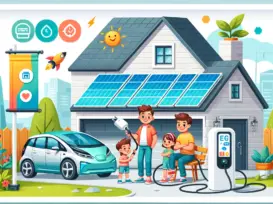Grus Home Energy - Time-of-Use rates
Understanding Time-of-Use Rates: How They Impact Your Energy Costs
Time-of-use rates are a type of pricing structure utilized by electric utilities to encourage consumers to shift their electricity usage to off-peak hours when demand and costs are lower. This pricing strategy aims to reduce strain on the grid during peak hours and promote energy conservation.
The concept behind time-of-use rates is simple: consumers are charged different rates for electricity depending on the time of day. Typically, there are three different rate periods – peak, off-peak, and shoulder. Peak hours, when electricity demand is highest, usually occur during the late afternoon and early evening. Off-peak hours, when demand is lowest, are typically overnight and during the early morning. Shoulder hours fall in between peak and off-peak times.
During peak hours, electricity rates are higher to reflect the increased demand and higher costs of generating electricity. Conversely, off-peak hours have lower rates as there is less strain on the grid and lower costs associated with producing electricity. By shifting energy usage to off-peak hours, consumers can take advantage of these lower rates and potentially save money on their electricity bills.
It’s important for consumers to understand their utility’s time-of-use rate structure and how it may impact their energy costs. By being mindful of when they use electricity, consumers can make informed decisions about when to run appliances, charge devices, and engage in other energy-intensive activities. For example, consumers may choose to run their dishwasher or do laundry during off-peak hours to take advantage of lower rates.
Some utilities offer tools and resources to help consumers track their energy usage and identify opportunities to save money through time-of-use rates. Smart thermostats, energy monitoring devices, and online portals can provide consumers with real-time information about their energy consumption and costs. By being proactive and adjusting their habits, consumers can potentially lower their electricity bills and contribute to a more sustainable energy future.
While time-of-use rates can offer benefits in terms of cost savings and energy conservation, they may also pose challenges for certain consumers. Those who are unable to shift their energy usage to off-peak hours due to work schedules or other commitments may end up paying higher rates during peak hours. Additionally, there may be concerns about the fairness and equity of time-of-use rates, as lower-income households may have limited flexibility in when they can use electricity.
Overall, understanding time-of-use rates and how they impact your energy costs is essential for making informed decisions about your electricity usage. By being aware of peak, off-peak, and shoulder hours, consumers can take advantage of lower rates and potentially reduce their energy bills. While there may be challenges associated with time-of-use rates, such as limited flexibility for certain consumers, there are also opportunities for cost savings and energy conservation. As the energy landscape continues to evolve, time-of-use rates will likely play a key role in shaping how consumers use and think about electricity.
©2025 All Rights Reserved. Grus IoT Co.,Ltd.

